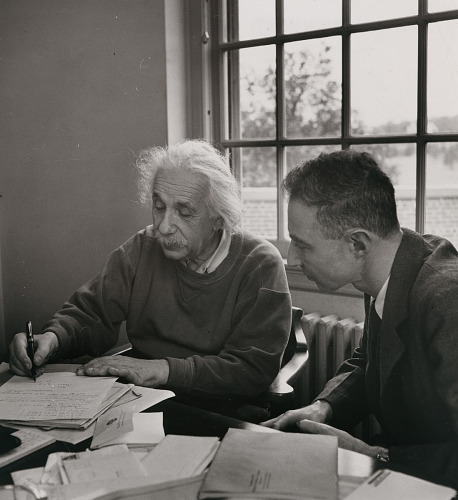The Einstein vs Oppenheimer Chess Game

Chess grips its exponent, shackling the mind and brain so that the inner freedom and independence of even the strongest character cannot remain unaffected.
-Albert Einstein
I enjoy playing chess a lot. I learned to play when I was a kid and picked it up again during grad school. There is an interesting game flowing in the internet between Albert Einstein and J. Robert Oppenheimer, that supposedly took place at Princeton in 1933, when they were both working there. The game was first published in Freude am Schach (The Pleasure of Chess) by Gerhard Henschel in 1959, but it is not officially confimed that it actually took place.
The game began with one of the most common openings, the Spanish (Ruy Lopez), demonstrating that both Einstein and Oppenheimer had tipped their toes into chess theory. The first few moves flow naturally, with Einstein’s 5. Bb3 revealing his intent to apply pressure on the f7 square and focus on the kingside.
As the game progressed, Einstein let Oppenheimer capture his e pawn 6. Nxe4, but responded by moving his kingside rook in the middle of the board. A few moves later 10. Nxe5, Oppenheimer chooses to retreat his knight, instead of exchanging, but that allows 11. Qf3 to create a strong attack in the f7 square.
Oppenheimer blunders 11 ..f6, trying to kick out the knight, but Einstein finds 12. Qh5+, which starts a serious attack on the black king. Einstein sacrificed his kinght in 13. Nxg6, to get the rook, explointing the pinned knight in e7, and gets a large advantage.
After some exchanges, we get to a very nice move by Einstein, 21. Nc4. Oppenheimer captures the knight, but then exchanges his queen for a rook, and the game is completely lost for him, with no viable options for his king. After 24. Bxe7, J. Robert Oppenheimer resigns and Albert Einstein gets a well-deserved victory.
While this chess game might not be as celebrated as the scientific achievements of both players, it offers a fascinating glimpse into the strategic minds of two remarkable physicists. The game’s intricate tactics, sacrifices, and brilliant positional maneuvers mirror the thought processes that guided their groundbreaking research in physics.
It is worth noting that Einstein’s connection to chess extended beyond this game. He had the privilege of knowing Emanuel Lasker, the longest-reigning World Chess Champion in history. Lasker’s presence and teachings undoubtedly influenced Einstein’s approach to the game, adding an extra layer of depth to Einstein’s engagement with chess.